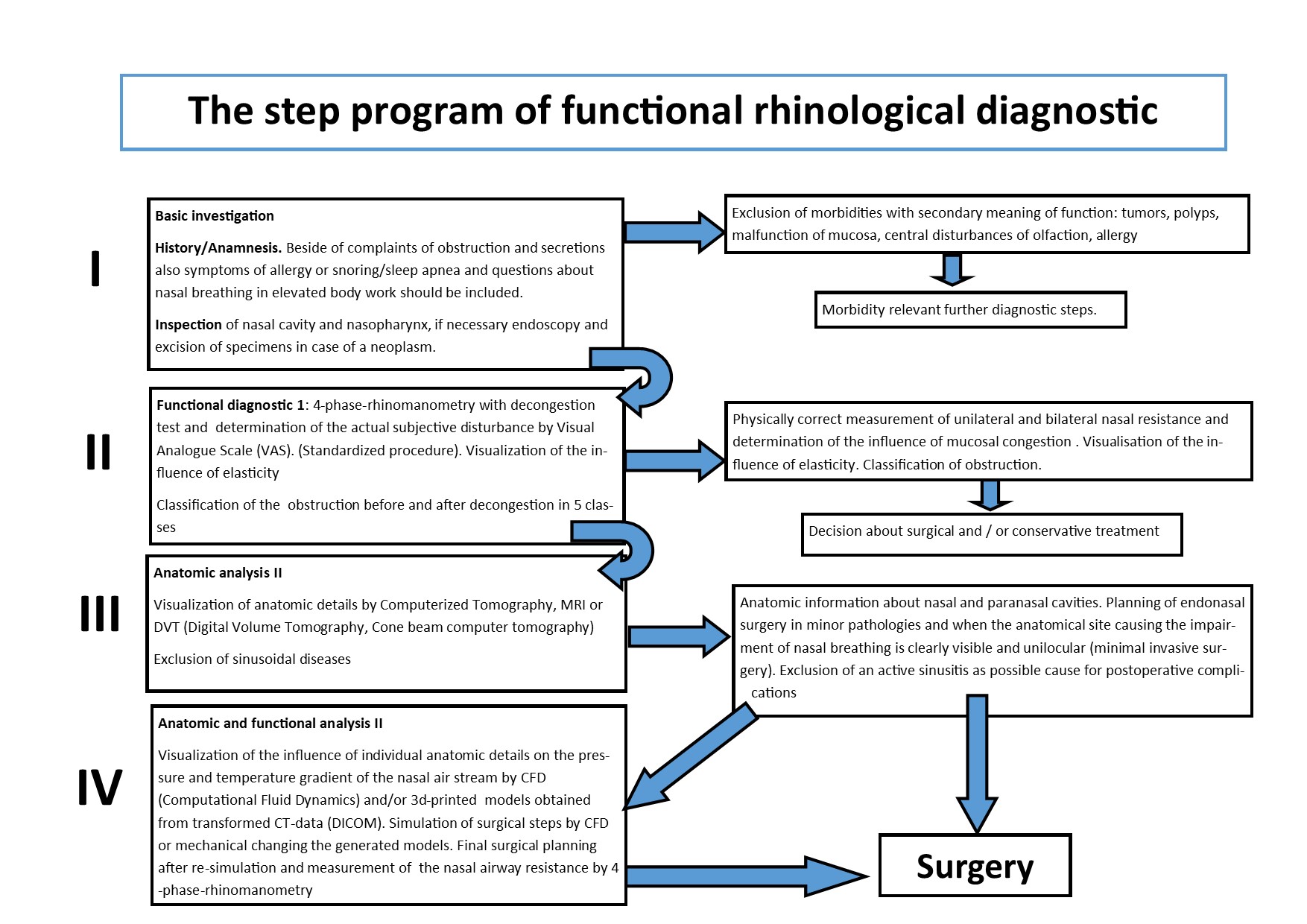Project Information
Download the Rhinodiagnost Project Flyer
Internationally recognized research centers and market-leading medical technology companies are cooperating via the RHINODIAGNOST project in order to establish a coordinated morphological and functional diagnostics for ENT physicians. The RHINODIAGNOST services shall be organized in a rapid network providing new, additional decision aids, such as 3D models and flow simulations, for ENT physicians and radiologists.
Approximately 11% of the European population suffer from a disability of nasal breathing or chronic inflammation of the nasal sinuses. In Germany, Austria and Switzerland, more than 100,000 operations are carried out on the nose or the nasal sinuses every year. The impairment of the quality of life (QoL) for these patients can be compared to the impairment of QoL for patients affected by chronic lung diseases or diabetes. In the US, some 500,000 operations are performed per year. The current diagnosis of nasal function is not sufficiently precise, which is the reason for a surgery error rate of between 10% and 40% (sinuwave).
The diagnostic quality is currently based primarily on the quality of the training of the practicing physician and his/her experience with clinical pictures. Functional diagnostics makes use of methods of medical imaging, such as computer or magnetic resonance tomography, in order to enable a well-founded diagnosis. Unfortunately, however, such analysis methods do not include any information on the respiratory comfort of a patient which is defined by flow-mechanical parameters. Frequently, rhinomanometry is used to determine the respiratory resistance when using inspiration in order to provide extended information about the patient’s respiratory capacity. Furthermore, current developments in the field of numerical flow mechanics and high-performance calculations allow for patient-individually computer-assisted flow predictions that can help to detect and limit the anatomical location of a pathology. The resultant information surplus allows the surgeons to even better adapt operation planning patient individually and to increase the chances of success for operations and treatment therapies. Unfortunately, due to their complexity and their costs, such methods have not yet been introduced into the day-to-day operations of hospitals.
In order to improve this situation, the implementation of a NOSE Service Center (NSC) is being prepared within this project. Rhinodiagnost will offer expanded possibilities of functional diagnostics and will provide a network of service points (National Relays).
Project duration: 1 September 2017 until 31 December 2020
Funding program: COIN / IraSME
Lack of success in functional rhinosurgery may be the result of
- Inadequate functional and anatomical preoperative diagnostic information
- Schematic application of surgical methods
- Lack of experience or training of the surgeon
With an appropriate approach to functional diagnostics, success can be achieved more easily. The following diagram shows a solution for this.

To cite as: Vogt K., Rhinodiagnost Project. The step program of functional diagnostic, 2021. https://rhinodiagnost.eu
Find below a link to a film by Armando Hasudungan, which gives a good introduction to the anatomy of the human nasal cavities. >>>
